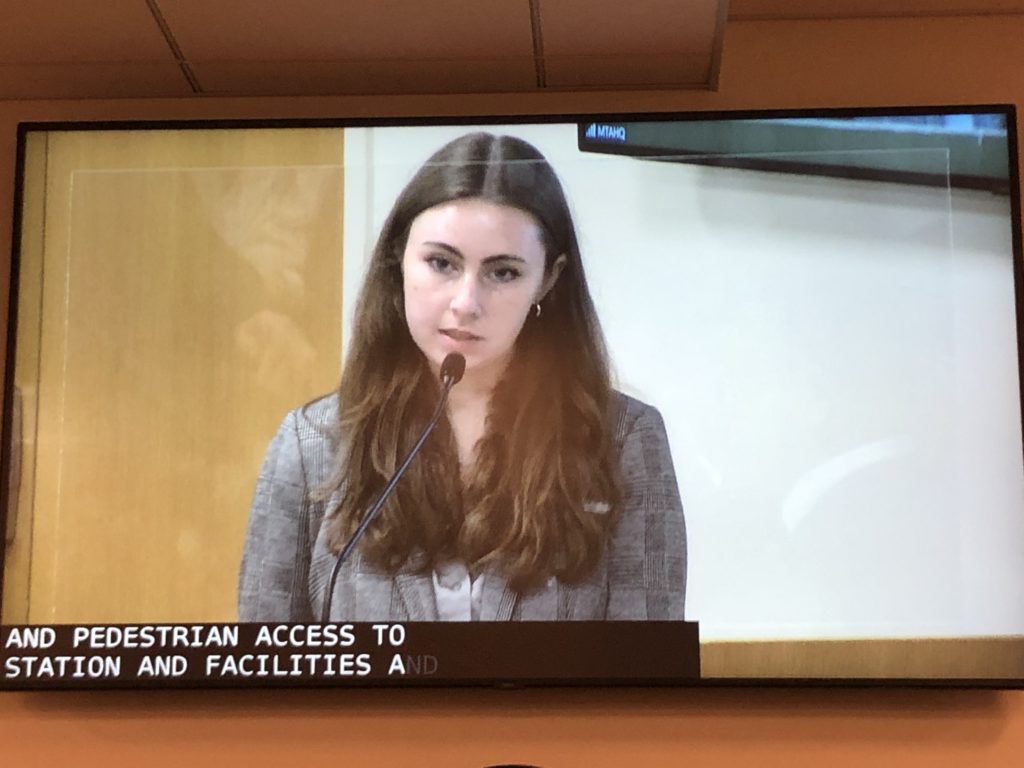Good morning! I’m Kara Gurl, Research and Communications Associate at the Permanent Citizens Advisory Committee to the MTA, PCAC.
As transit riders, many of us already start and end our trips as pedestrians. But now, with the MTA Bike Access Bill signed by Governor Hochul, we’re excited to officially welcome bicycle riders to our family. PCAC’s legislative mandate now includes recommending ways for the MTA to improve bike and pedestrian access to its stations and facilities, and we look forward to welcoming three new PCAC members in the coming months with expertise in this area.
We’re gearing up to offer our first set of recommendations to inform the MTA’s strategic access plan for bikes and pedestrians. Now, during our climate crisis, is the time to make sure that riders can get to transit without driving. And as the MTA grapples with attracting back riders, opening new paths— bike and pedestrian paths—to get to stations will help. Micro mobility is the future, and we’re encouraged by your commitment to studying ways to make it work for transit riders. The first and last mile study underway for commuter rail is great. Secure bike parking, fare integration, and clearly communicating the rules will be key systemwide— while, of course, making sure riders bike safely and watch for pedestrians.
While these plans are in the works, we have a challenge for you: Instead of getting on the train here at Bowling Green later, we encourage those of you who are able to try riding a Citibike to Wall Street or Fulton Street before getting back on transit. It’s a scary and challenging ride! I, myself, recently started Citibiking to the subway, and it’s shown me countless ways where connectivity must be improved between modes. Improving bike access to transit is a natural extension of the work you’re already doing with city DOT on busways and bus lanes.
Prioritizing mobility means making sure that all riders can get where they need to go without a car. Improving first and last mile connections to transit will require coordination and communication with our partners in mobility: city and state DOTs, Citibike and other bike and scooter share companies, and local municipalities, among others. We’re confident that all stakeholders can work together — the future of our city, region, and planet depend on it. Thank you.
